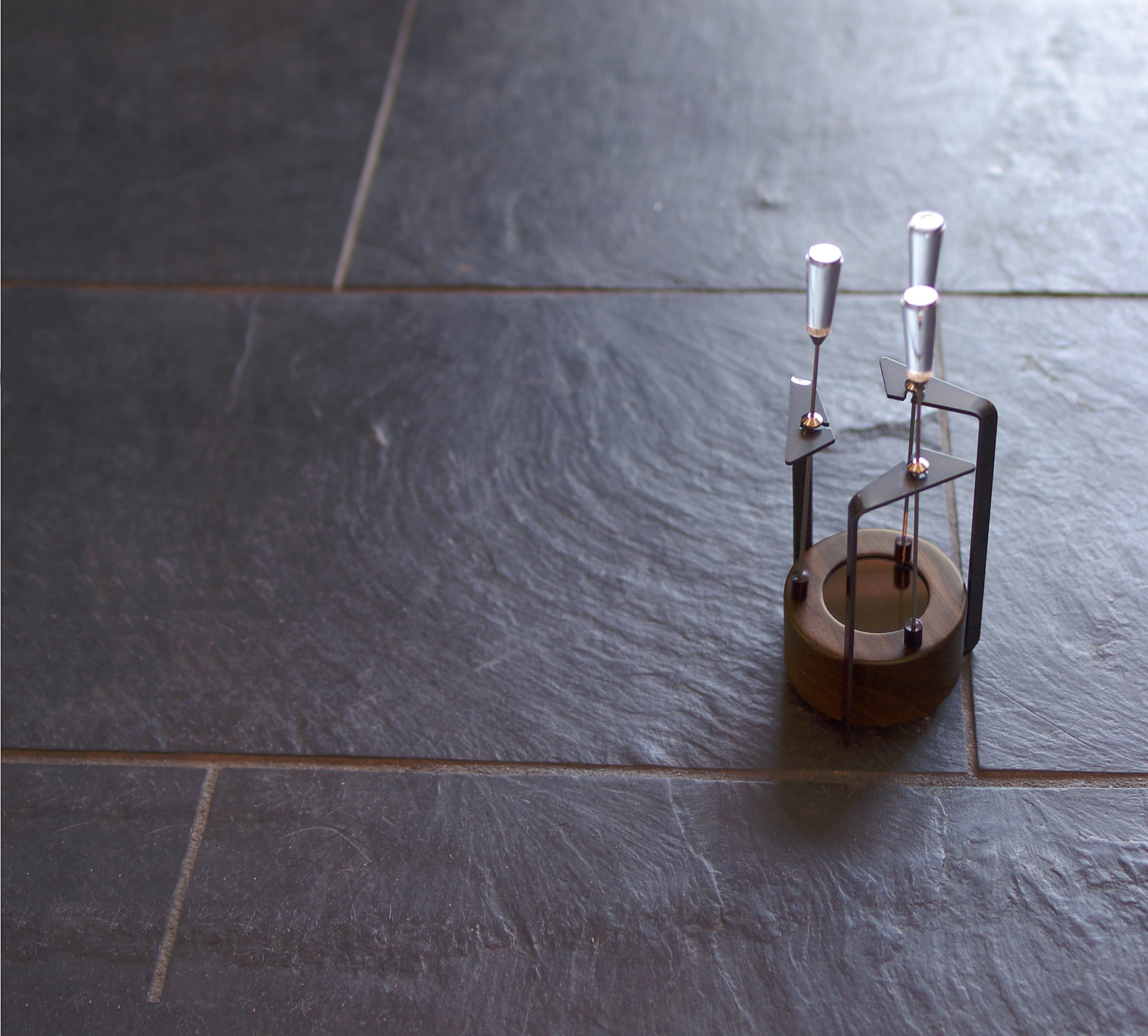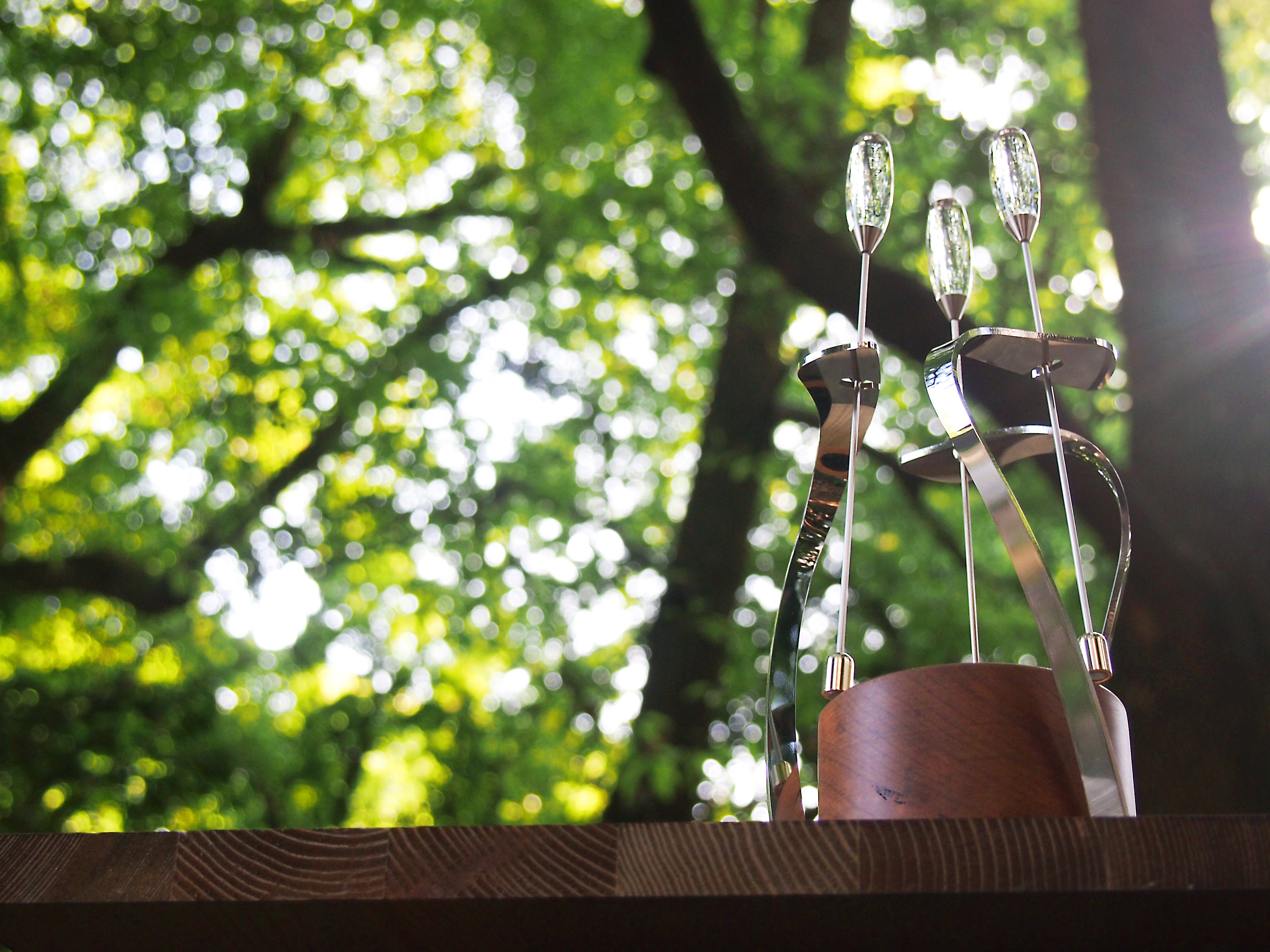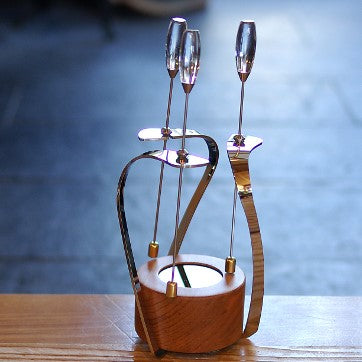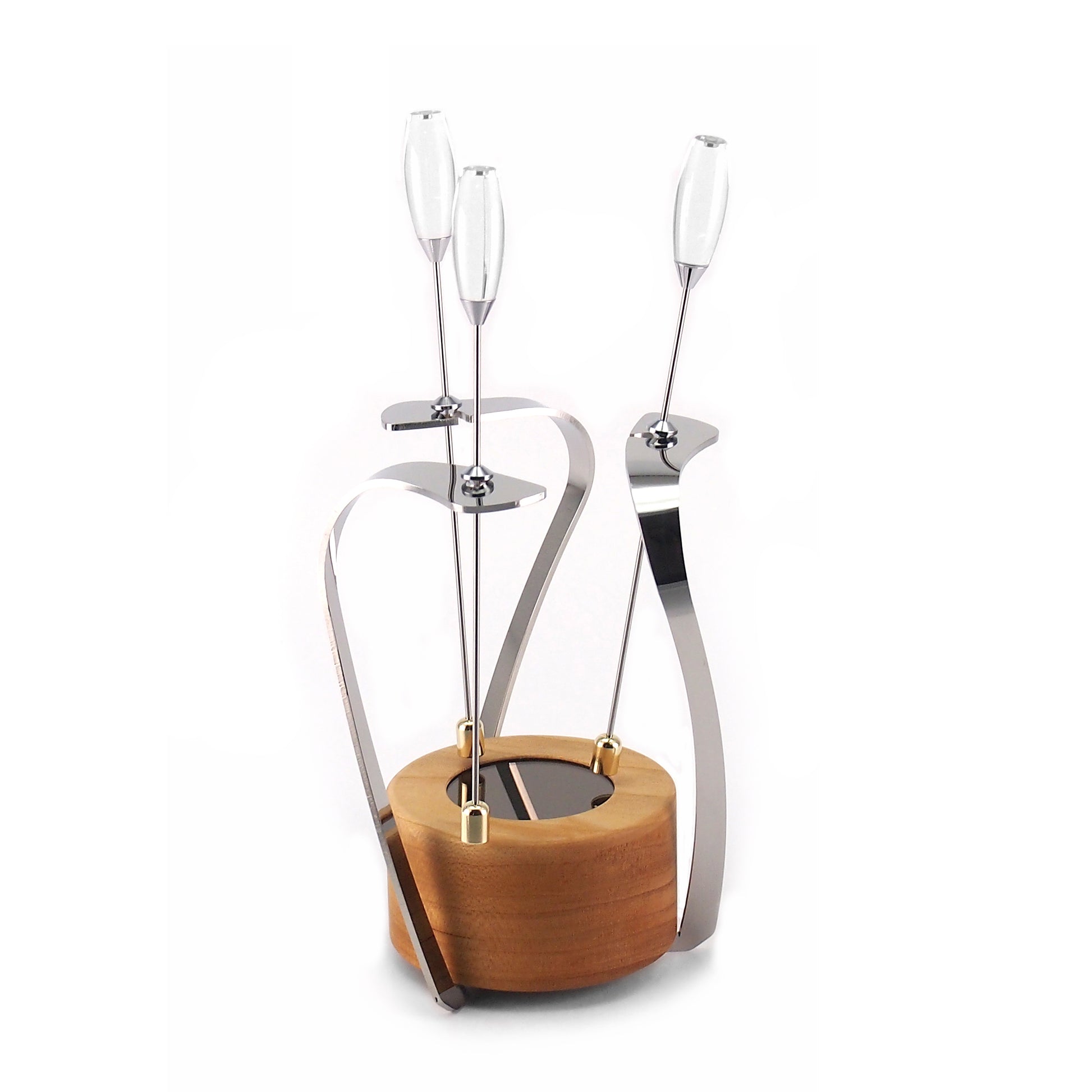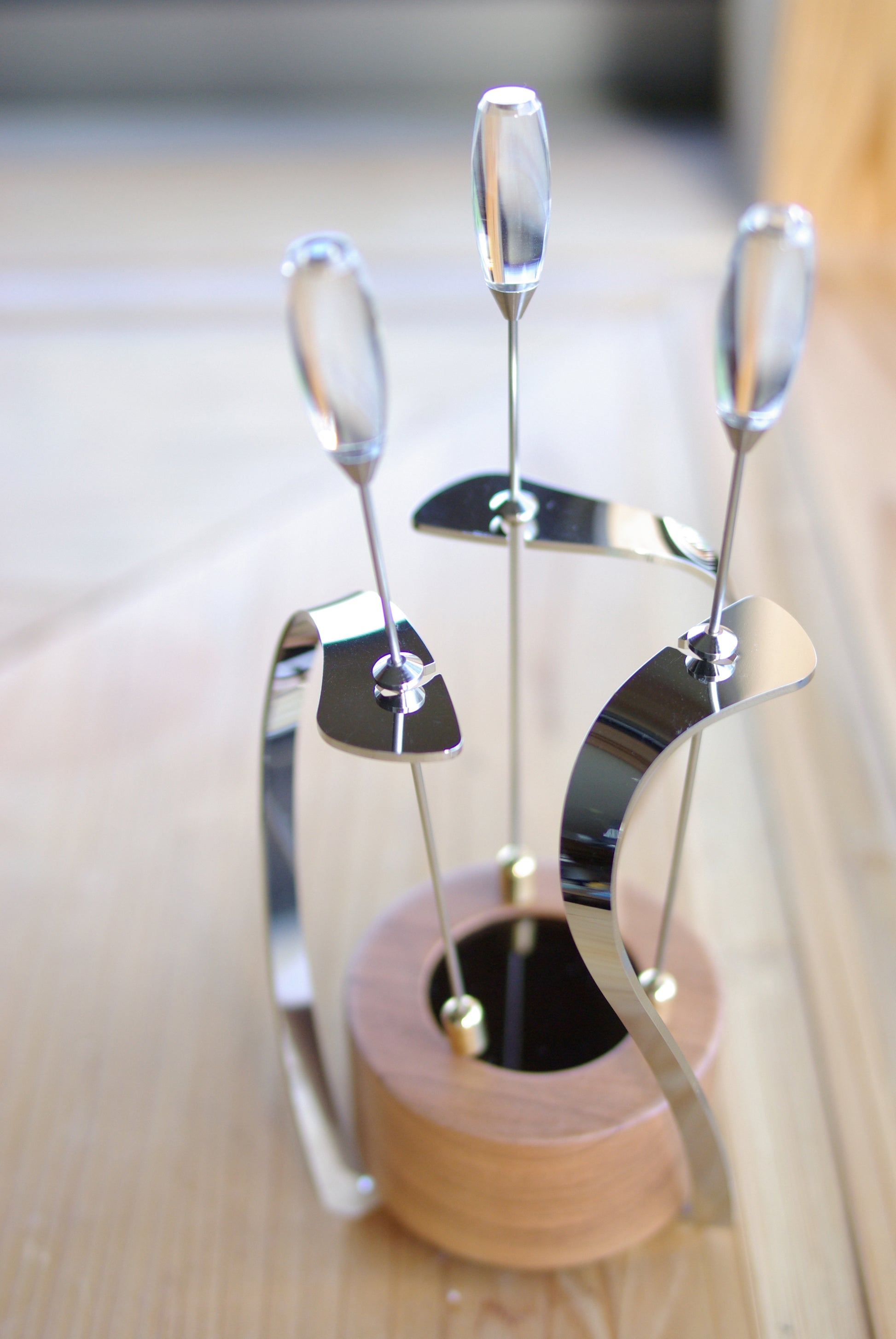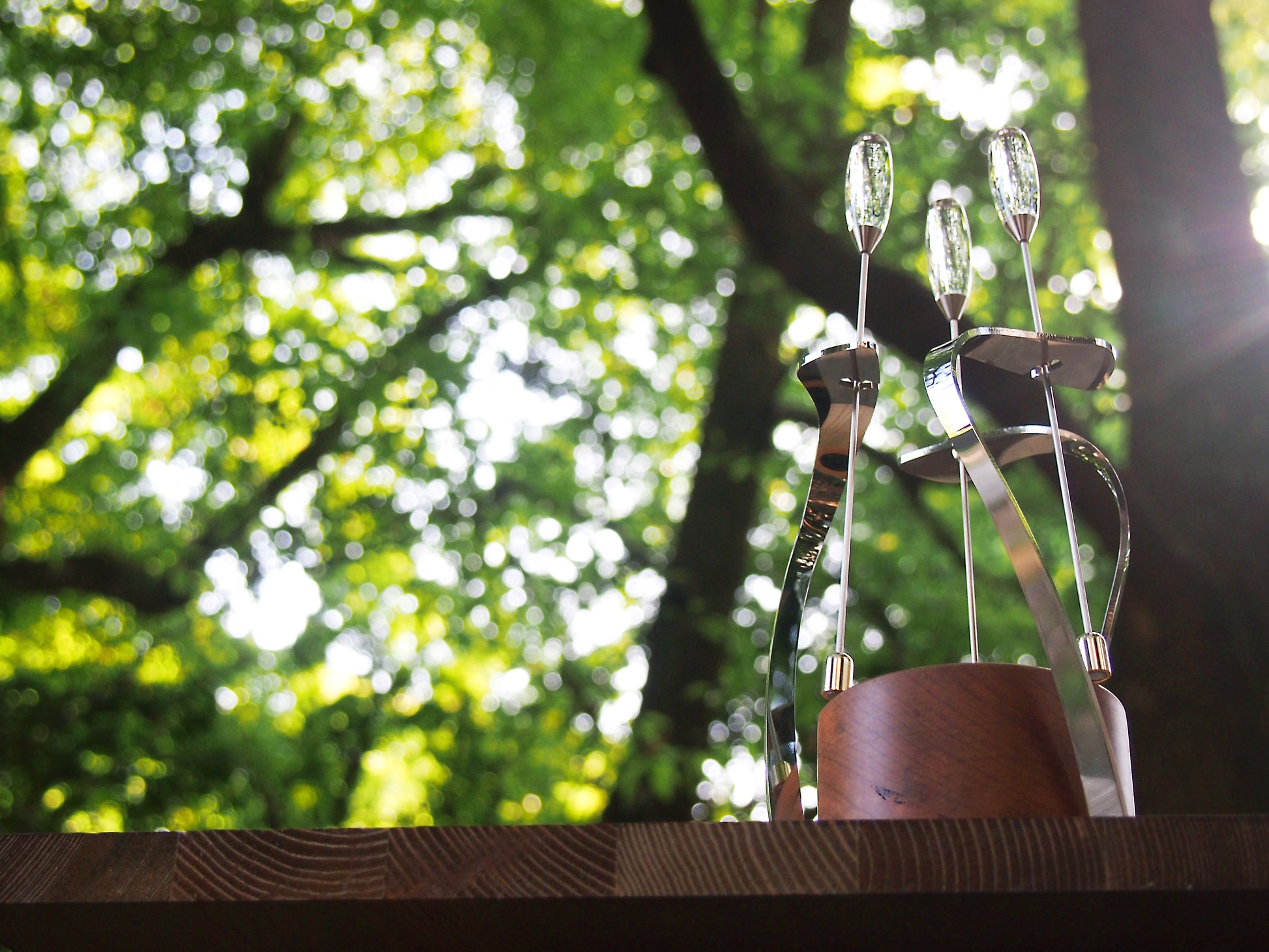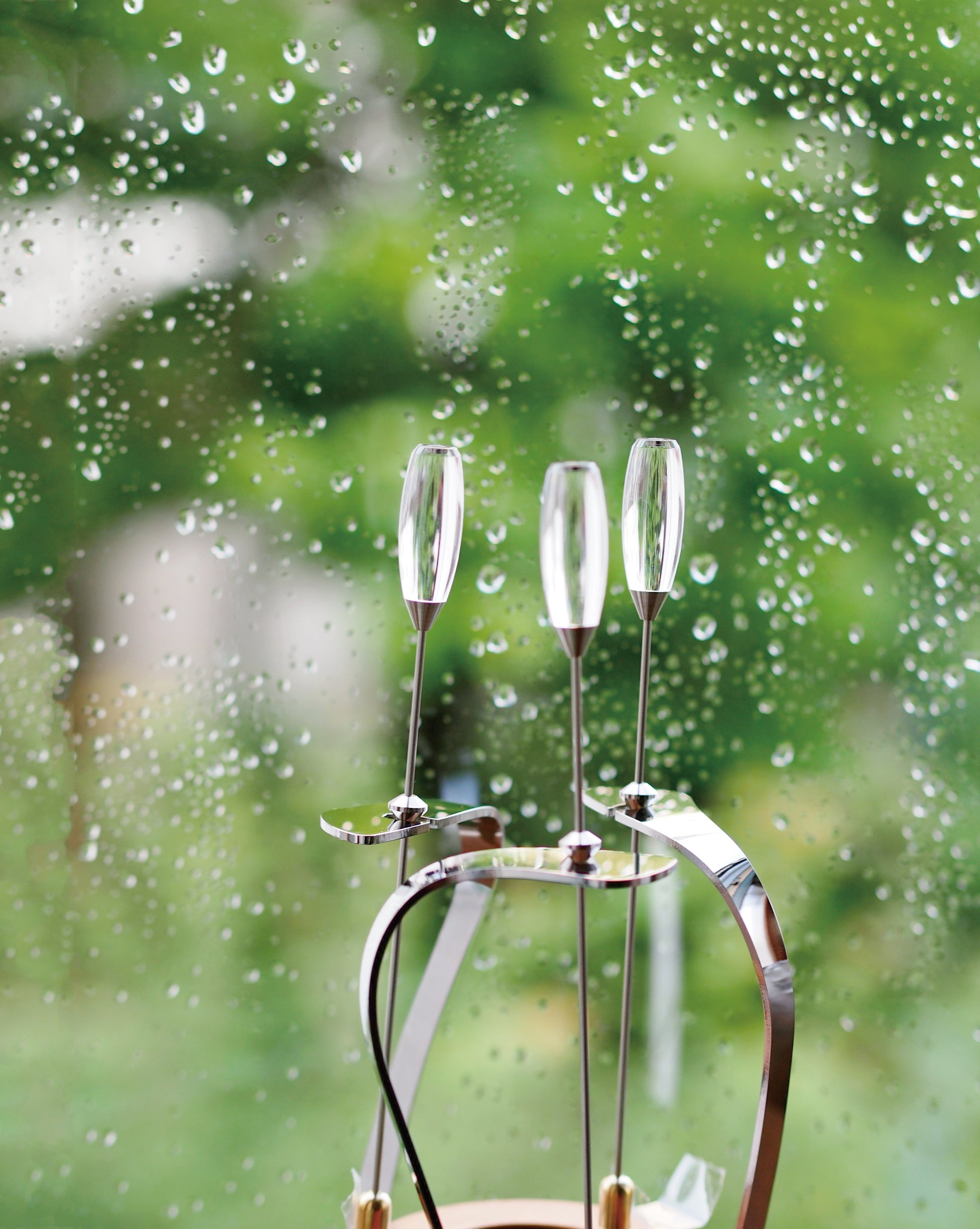amaoto - HAKU
amaoto - HAKU
Interior décor that evokes the rhythm of rain.
The sound of raindrops comes to life through the movement of three pendulums, allowing you to sense the gentle passage of time in the rhythms that emerge in quiet, fleeting moments.
As light falls on the wooden base, a m a o t o begins to move. The pendulums sway in response to each other, tracing unexpected paths as they interact with the changing light, weaving a calming rhythm into the stillness.
---
HAKU
HAKU features a bright, natural color tone. It is composed of soft curves inspired by the natural shapes of plants, capturing the image of raindrops sparkling on leaves after the rain.
Size: φ92 × H215 mm
Material: Stainless steel, brass, acrylic, wood (cherry wood)
Country of origin: Japan
**Ships from Japan. Import duties/taxes may apply depending on your country.
Couldn't load pickup availability
Specifications
Specifications
Assembly:
Attach three pendulums to the support structure
- No fixed rules for pendulum and support column combinations
- Customers can freely mount the pendulums
- Simple assembly required (please refer to the instructional video)
Activation:
Begins moving at approximately 300 Lux (similar to dining space brightness)
Sound Characteristics:
Sound volume and quality vary depending on:
- Surface material
- Proximity to walls
- Room size and layout
Important Note:
The sound cannot be stopped while the pendulums are in motion
Mechanism of amaoto
Mechanism of amaoto
①The solar cell absorbs light energy.
②The light energy causes the three pendulums to begin moving.
③A hammer, influenced by the magnetic force from the pendulums, strikes and generates a rhythmic sound.
When light shines on the wooden base, amaoto comes to life. The three pendulums sway, each affecting the others, following varied paths as they weave a rhythm into the stillness.
Included Items
Included Items
- Main unit
- 3 pendulums
- instruction manual, catalog



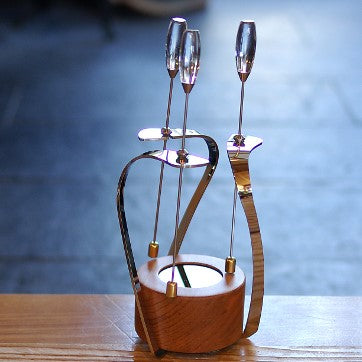
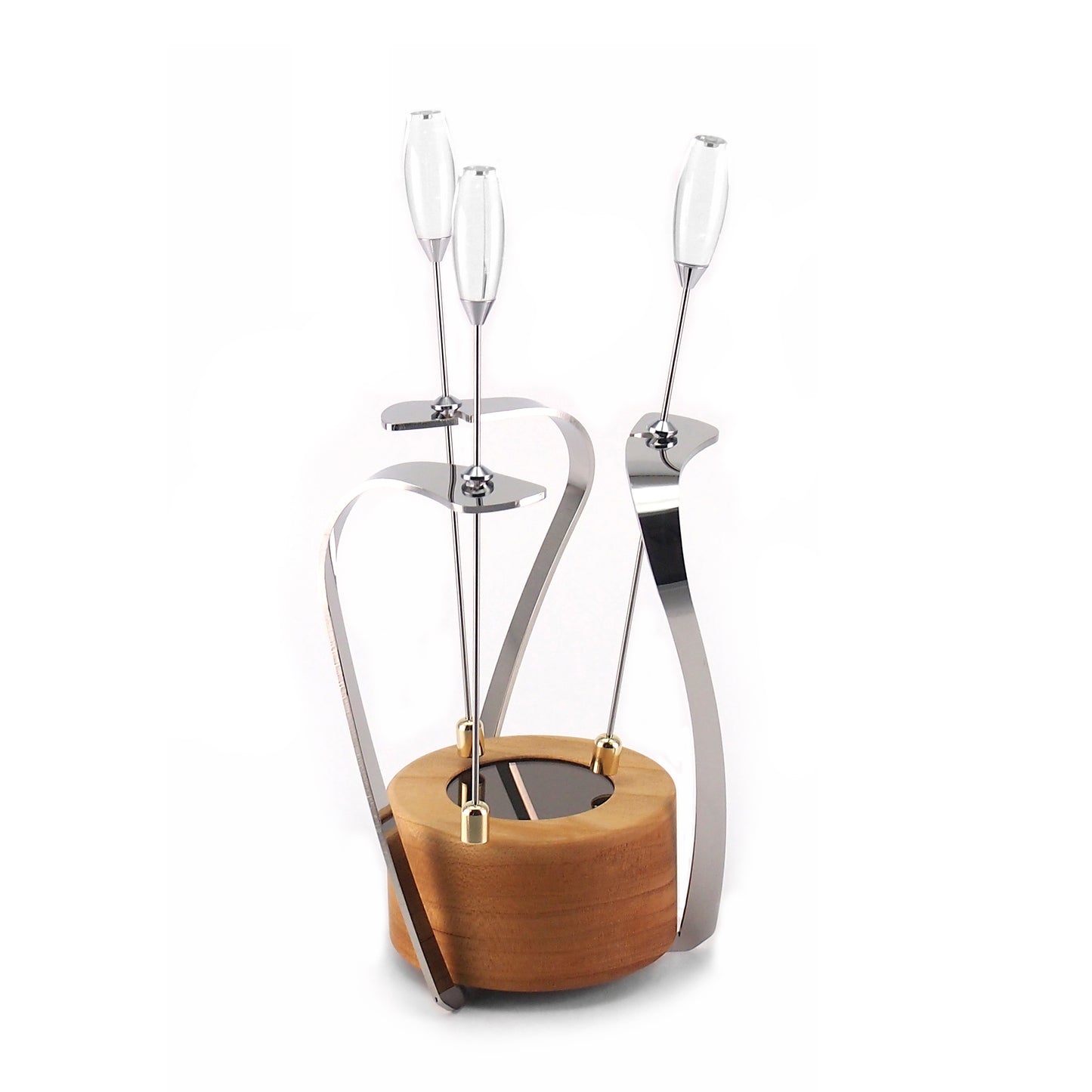
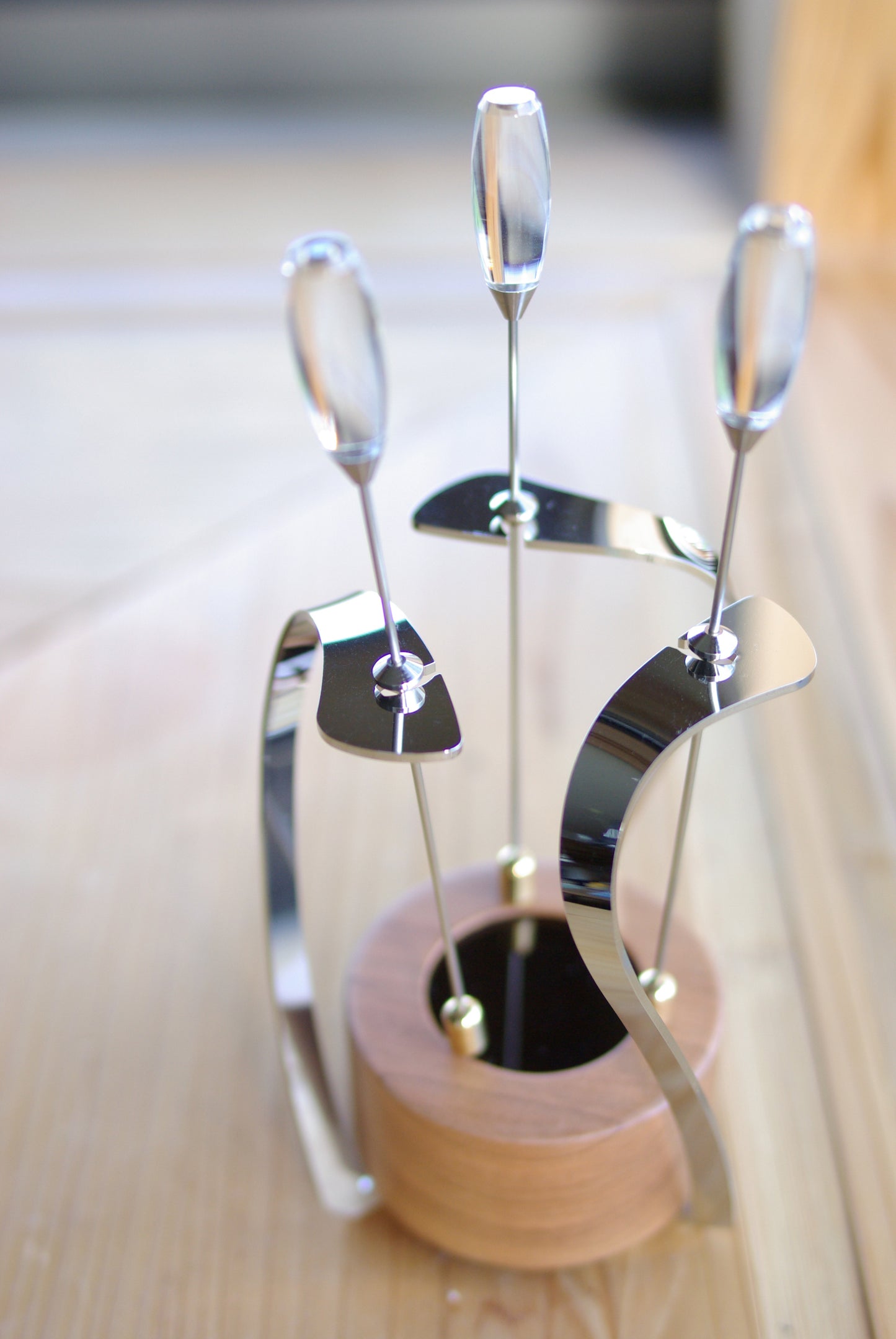
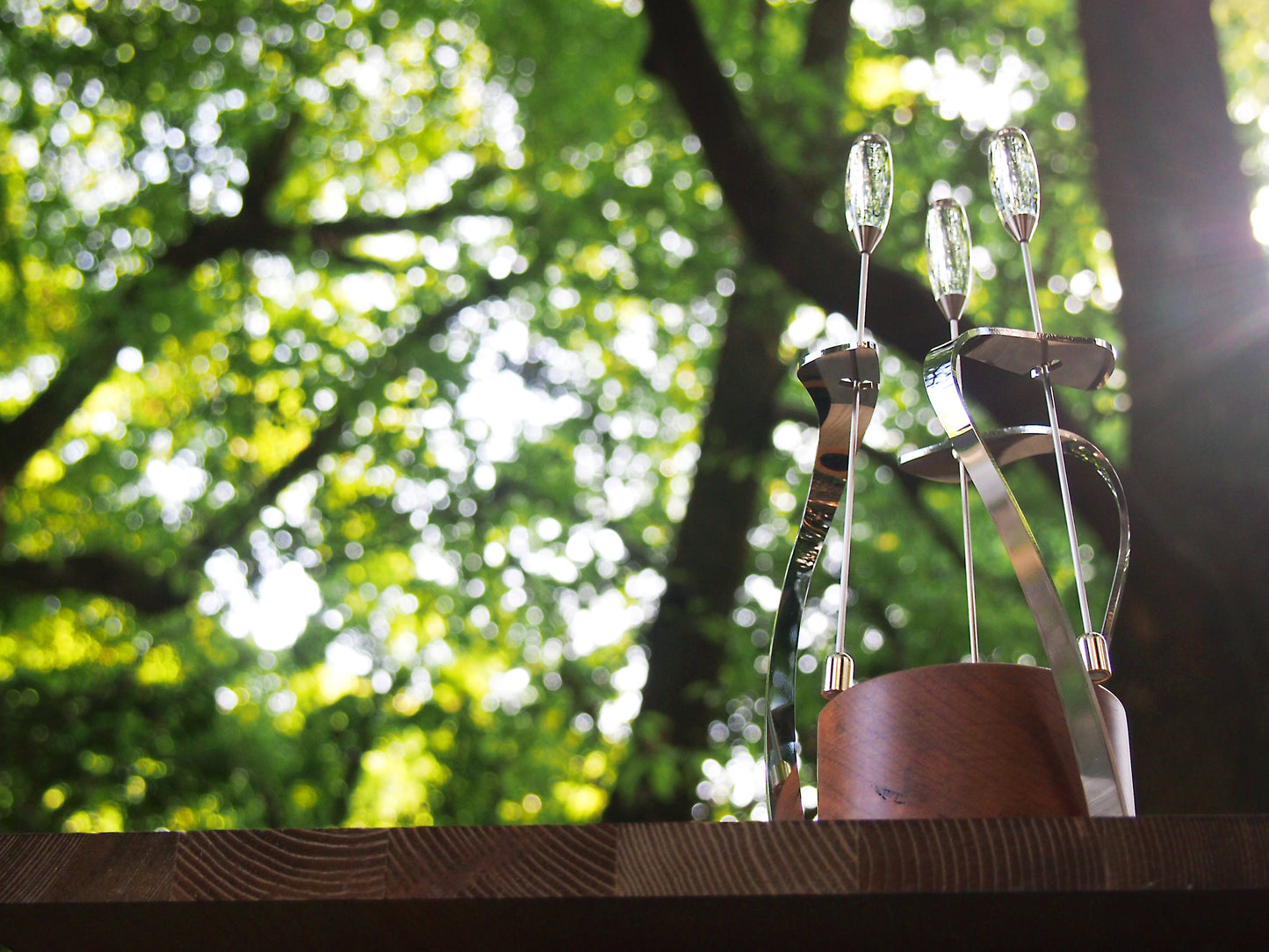
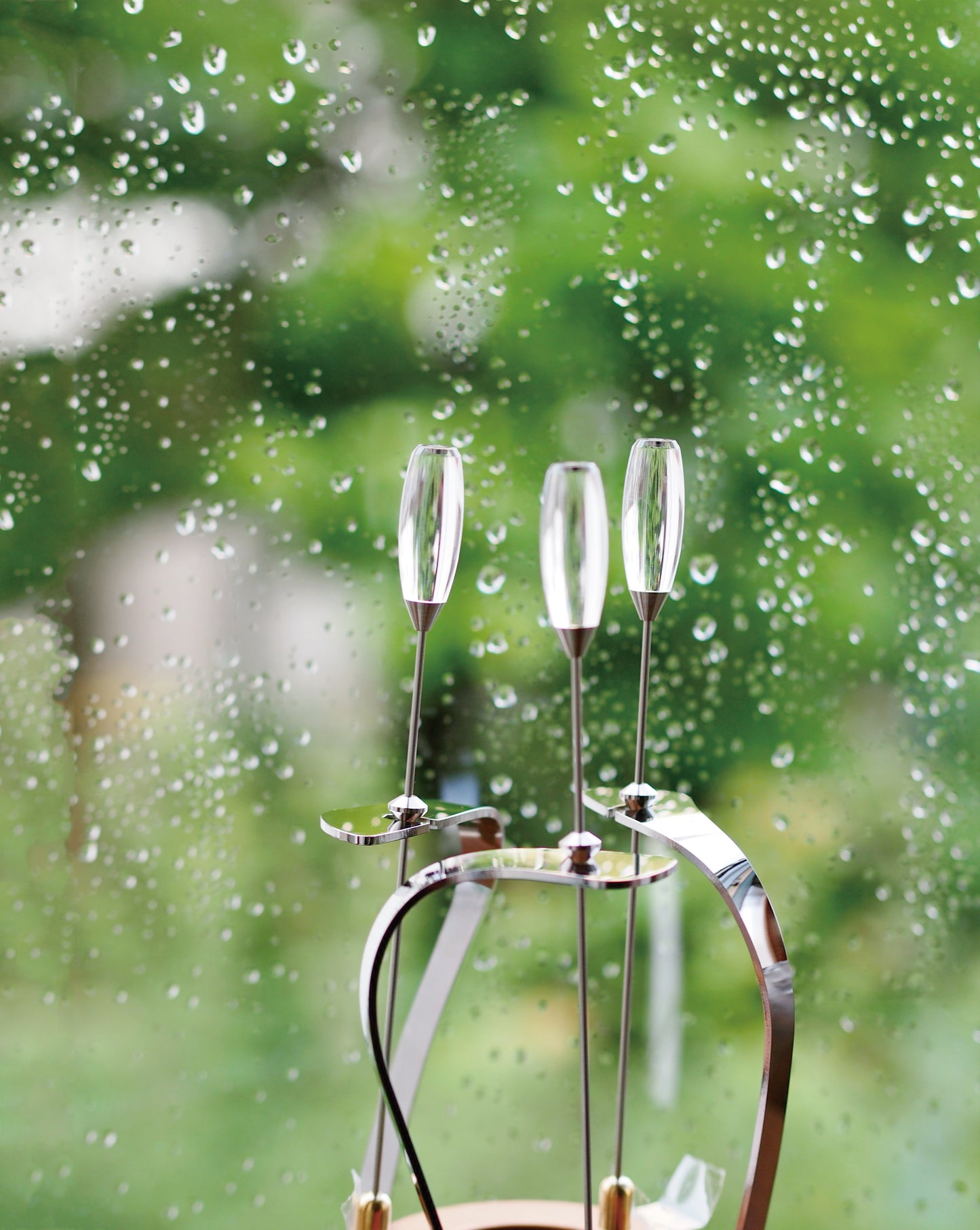
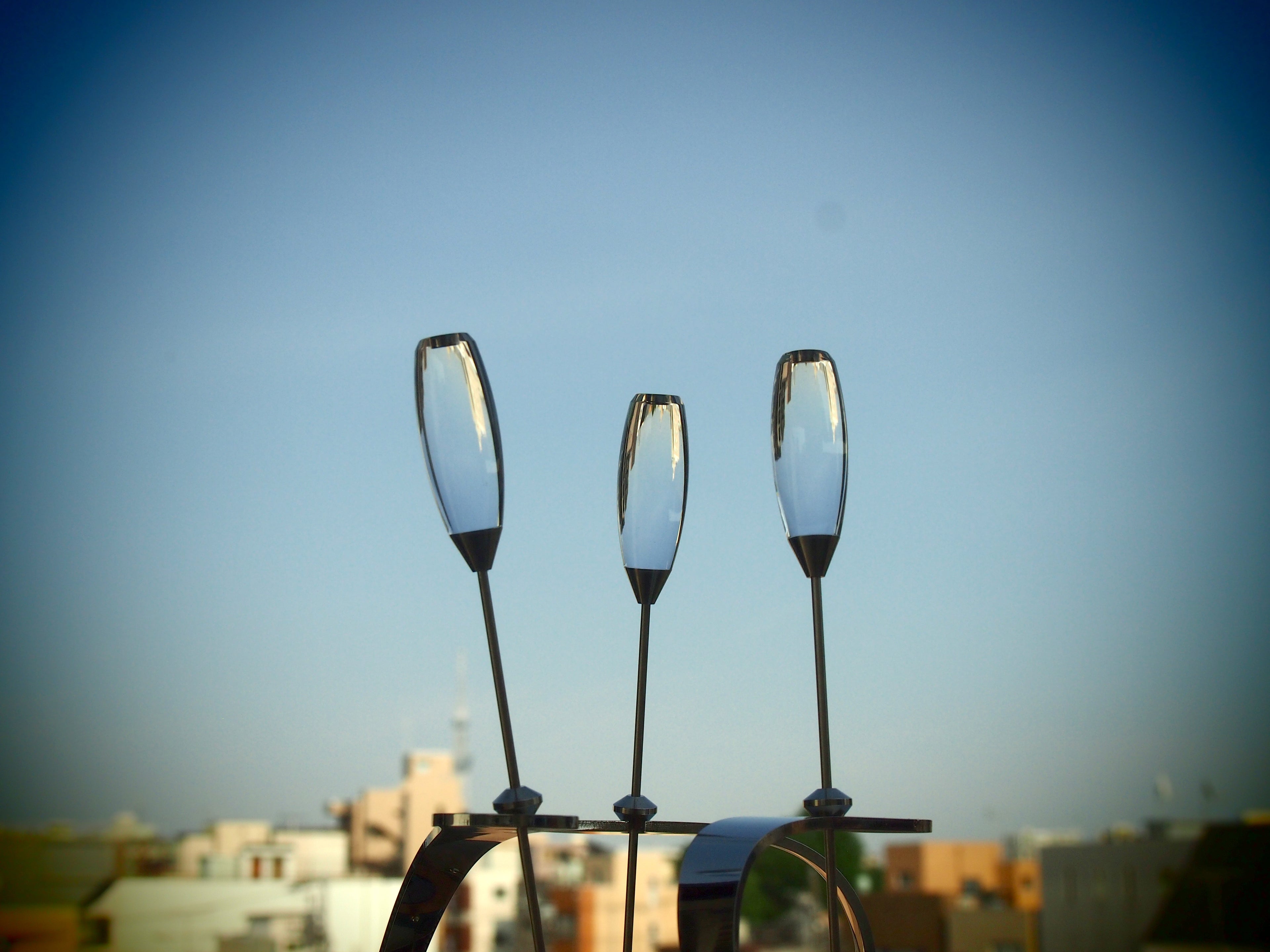
amaoto
Our lives are filled with countless sounds. We live in this modern society consciously hearing prominent sounds extracted from background noise.
At the same time, we tend to overlook the sounds nature offers. The small but beautiful sounds—echoing birdsong across a field, leaves rustling in the wind, and the gentle drip of rain in a foggy morning forest—often go forgotten.
The concept of 'soundscape,' introduced in the 1960s, highlights a specific sound experience for a space by encouraging the consideration of sound as an essential element of the landscape, rather than something apart from it.
Now that the connection between sound and land space has been slowly reconsidered, it is time for us to reconnect with these sounds and view familiar spaces from a fresh perspective.
